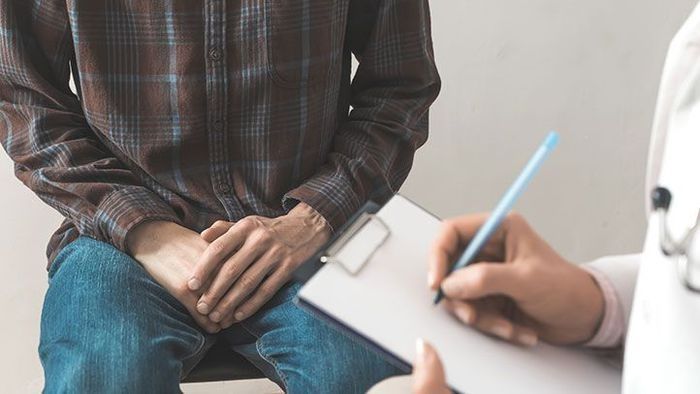Curved penis disease - symptoms and causes
Some men have a penis that curves to one side, up or down when it's erect. This is common, and for most men having a curved penis is not a problem.

Some men have a penis that curves to one side, up or down when it's erect. This is common, and for most men having a curved penis is not a problem. In general, a curved penis is only a concern if erections are painful or if the curvature of the penis interferes with sexual activity.
In those cases where the curvature of the erect penis exceeds 30º, it is necessary to take some kind of measure. Below this, no serious problem requiring treatment or intervention is considered. In many cases, the symptoms imply pain when the penis becomes erect, due to the tension generated by the curve. It also involves associated psychological problems, such as depression, lack of self-esteem, or frequent mood swings.
Symptoms
The main symptom of Peyronie's disease is the excessive curvature of the penis when it is erect.
It is completely normal for the penis not to be completely straight.
If your penis has a slight curve to the side, up or down, don't worry, it's normal.
In some cases, the curvature is so severe that it makes penetration impossible.
The partner also suffers. The vagina can withstand a certain curvature without problems. However, when it is excessive it can produce pain. Depending on the severity, you may feel relief from the pain by changing your posture, with the disadvantage that sexual intercourse will be more limited. Even in cases where these positions are adopted, when the time comes to the climax when the penis acquires the greatest degree of hardness and curvature, pain may be produced in both. In the most severe cases, penetration is impossible.
Causes
When you become aroused, blood flows into sponge-like cavities inside the penis, expanding and hardening it. Usually, the curved penis occurs with an uneven expansion of these spaces. Usually, this is due to normal differences in the anatomy of the penis, but sometimes scar tissue or another problem causes a curved penis and painful erections.
These are the possible underlying causes that contribute to a curved penis:
De la Peyronie's disease (a curved erection that can be caused by various underlying diseases)
Injury to the penis
Autoimmune disorders
Hereditary fibrous tissue (collagen) abnormality
When to consult the doctor
A curved penis usually does not require treatment. If you have a pronounced curved penis that causes pain or prevents you from having sex, consult a doctor. You may need to see a specialist in sexual or urinary problems (urologist).
Treatment for Peyronie's Disease
There are different treatments for Peyronie's disease. The two most effective are shock wave therapy and surgery. Both are effective, although it is preferable to use shock waves. Here's why we can say that.

Surgery
To combat penile curvature through surgery, an incision must be made in the place opposite the fibrous plaque. Using stitches, the area opposite the curve is shortened and thus the desired position is regained.
The advantage of this method is its efficiency. Utilizing surgery, the desired result can be achieved with an extremely high success rate. However, there are not only advantages. The operation is delicate and involves many other things.
In the case of surgery, it is necessary to go through an aggressive process that requires going through an operating room, anesthesia, a recovery period, and an adaptation period. In the case of the adaptation period, it can be especially annoying and prolonged in time, since a sudden change in the morphology of the sexual organ is made.
Another disadvantage is related to the size of the penis. Generally, this operation involves the loss of a few millimeters and even a few centimeters. The reason is that instead of recovering the part where the plaque was formed, the part on the other side is shortened.
Shock waves
The other effective treatment is the application of shock waves. The acoustic shock waves are expelled at high speed so that they collide with the fibrous plate. This low-density shockwave reactivates cell regeneration so that the tissues regain their original elasticity and reduce the curvature.
Among the many advantages of this treatment is that it is not at all aggressive. The side effects do not exist or are limited to slight discomfort during application. They have no side effects and do not require maintenance or second interventions, the results obtained remain.
At the end of each session, the patient leaves on his own and continues with his life normally. It is not necessary to undergo any type of drug, such as anesthesia. It does not leave any marks or scars and there is no risk of it affecting other organs.
By Dago Molina, Dr, Dagoberto Molina, urologist, oncologist, oncological surgeon, and member of the Mexican Society of Urology He is a member of the Mexican National College of Urology and is head of Urology at the ABC Hospital.
Source W Radio




